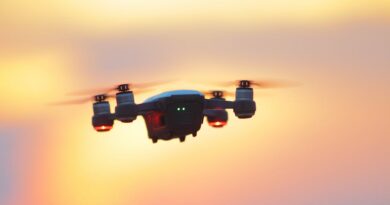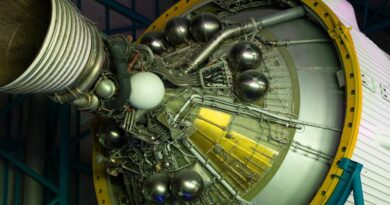Next-Gen Avionics: What to Expect
Did you know that the aviation industry is on the brink of a technological revolution? Next-generation avionics are changing the way pilots navigate and control aircraft. With advancements in technology happening fast, you might wonder what this means for the future of flying. Lets break it down!
What Are Avionics?

Avionics is a blend of the words “aviation” and “electronics.” It refers to all the electronic systems and devices used in aircraft. This includes everything from navigation systems to communication equipment.
Think of avionics like the brain of an airplane. Just like our brains help us make decisions and stay aware of our surroundings, avionics systems help pilots make safe flying decisions.
Why Are Next-Gen Avionics Important?

Next-gen avionics promise to enhance safety, efficiency, and user experience. Here are some key reasons they matter:
- Improved Safety: New systems can help prevent accidents by providing better data.
- Greater Efficiency: These systems can save fuel and reduce flight times.
- User-Friendly: Advanced displays make it easier for pilots to absorb information quickly.
As flying becomes more complex, these improvements are essential. With next-gen avionics, the aviation industry can meet the challenges of modern air travel.
What Technologies Are on the Horizon?

Several exciting technologies are emerging in the world of avionics. Lets take a look at some of the most promising advancements.
1. Enhanced Flight Management Systems
Flight management systems (FMS) are like the GPS for pilots. They automate tasks and help with route planning. The next generation of FMS will be more intuitive, offering:
- Real-time weather updates
- Dynamic rerouting based on air traffic
- Better fuel management options
This means fewer delays and a smoother flying experience.
2. Advanced Cockpit Displays
Picture a high-definition screen in a car that shows you everything you need to know. Next-gen cockpit displays will do just that for pilots, featuring:
- 3D terrain mapping
- Augmented reality (AR) overlays
- Touchscreen controls for easy navigation
These displays will make it simpler for pilots to understand their surroundings and make quick decisions.
3. Artificial Intelligence (AI) Integration
AI is not just for robots; it’s also making it’s way into avionics. AI systems can analyze vast amounts of data and help pilots with:
- Predictive maintenance alerts
- Automated decision-making support
- Enhanced situational awareness
This technology can minimize human error and improve flight safety.
How Will These Changes Impact Pilots?

Many pilots may worry that technology will replace their jobs. However, next-gen avionics will enhance their skills rather than take them away. Heres how:
- More Focus on Decision-Making: Pilots can concentrate on strategic decisions instead of routine tasks.
- Improved Training Tools: Simulators with next-gen avionics help pilots gain experience before flying real planes.
- Collaboration with AI: Pilots will work alongside AI systems, using data to make informed choices.
This partnership between pilots and technology will lead to safer skies.
What About Air Traffic Management?
Air traffic management (ATM) is evolving along with avionics. New systems aim to manage air traffic more efficiently. Heres what to expect:
- Fewer Delays: Real-time data sharing will help manage airspace better.
- Increased Capacity: Advanced systems will allow more flights without compromising safety.
- Environmentally Friendly: Improved routing will reduce fuel consumption and emissions.
These advancements mean a smoother and greener travel experience for everyone.
What Challenges Lie Ahead?
While the future looks bright, challenges remain. Here are a few obstacles the industry may face:
- Cybersecurity: Increased reliance on technology raises concerns about hacking.
- Cost: Upgrading systems can be expensive for airlines.
- Training: Pilots and crews will need ongoing training to keep up with new technology.
Addressing these challenges will be crucial for the successful rollout of next-gen avionics.
What Can Passengers Expect?
As avionics technology advances, passengers will notice improvements too. Heres what you might expect:
- Smoother Flights: Enhanced navigation means fewer bumps along the way.
- Faster Boarding: Better management systems will streamline processes at the airport.
- Better Communication: Passengers will receive timely updates about their flights.
Flying will become a more pleasant experience for travelers.
What Are the Takeaways?
Next-gen avionics are set to transform the aviation landscape. Here are the key points to remember:
- Avionics are crucial for safe and efficient flying.
- New technology will enhance safety and user experience.
- Pilots will work alongside technology, not be replaced by it.
- Challenges like cybersecurity must be addressed for success.
Your next flight could be very different from the last one. As advancements in avionics grow, so will the way we travel.
Ready for the Future of Flying?
The aviation industry is evolving rapidly. With next-gen avionics on the horizon, the future looks promising. Whether you are a pilot, an airline operator, or a passenger, understanding these changes can help you prepare for the skies ahead.
If you want to learn more about how technology is impacting aviation, check out this article on the FAA website.
Stay curious, stay informed, and enjoy your next journey in the sky!



